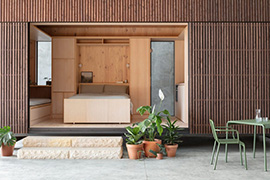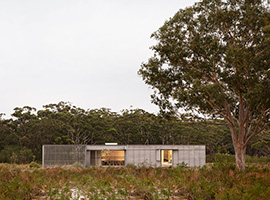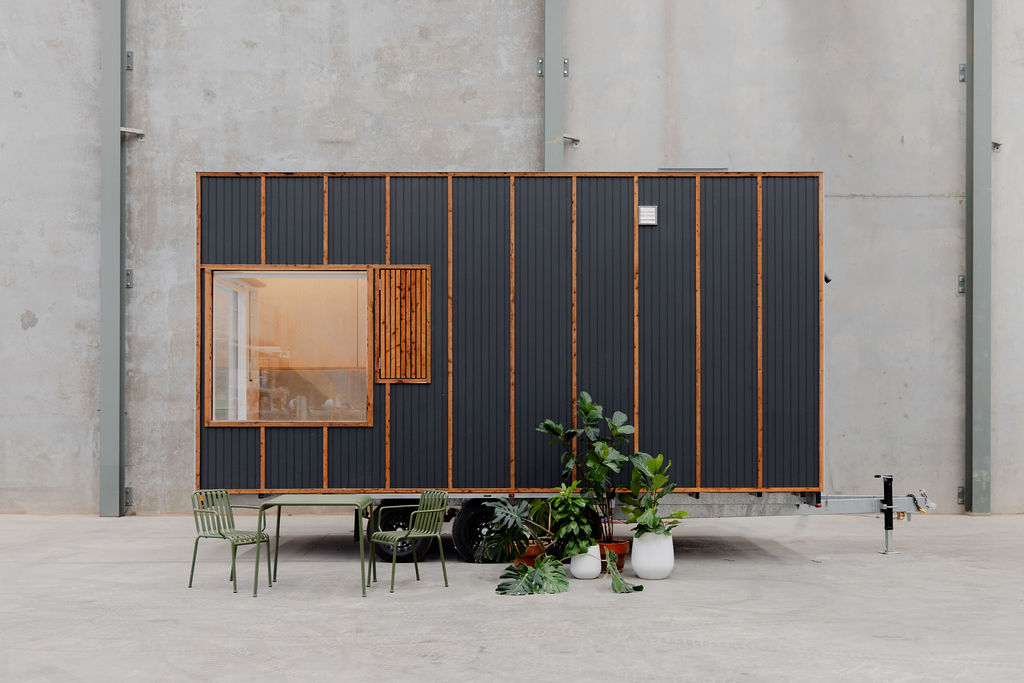Prefab homes offering an alternative in a housing affordability crisis
Article presented by "Origin", featured on realestate.com.au
To read the original article, click here.
In a market where traditional building methods are increasingly challenged by cost and time constraints, the Courtyard House, designed by Sydney-based CHROFI Architects in collaboration with modular builder FABPREFAB, stands as a testament to the future of construction.
This innovative project not only challenges the conventional perceptions of prefab homes but also offers a viable solution to the burgeoning housing affordability and shortage crisis.
“Most people probably think of prefab homes as cheap and nasty,” says FABPREFAB Managing Director Ed Callanan.
“They’re in fact quite the opposite.”
The Courtyard House, deriving its name from its distinctive central courtyard, is a marvel of modern design.
It boasts a sophisticated and seamless interior, where each space is crafted with a keen eye for detail.
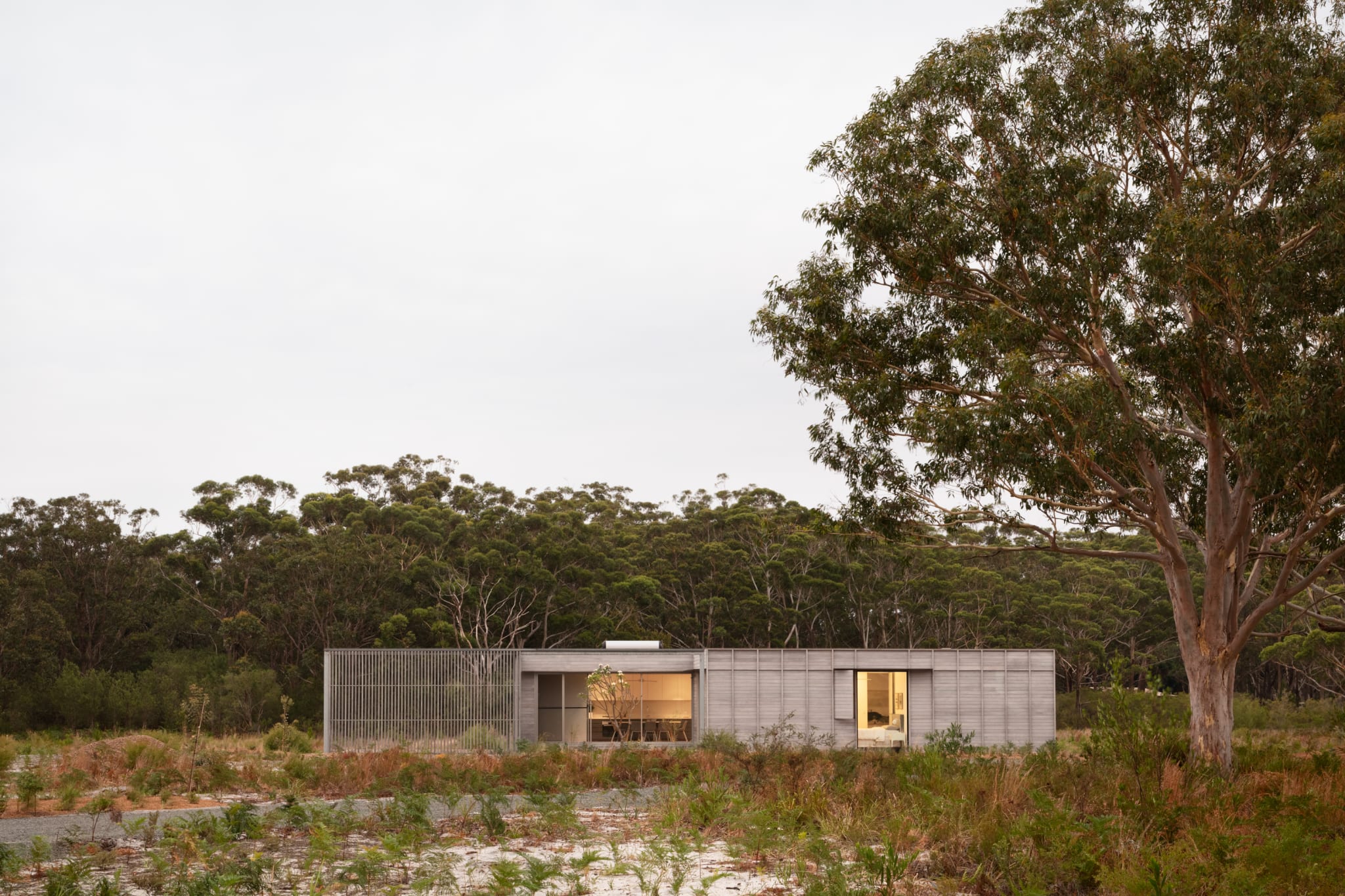
Striking exterior immediately draws the eye to the Hawks Nest home.
The fully integrated kitchen stands as the heart of the home, featuring state-of-the-art appliances and sleek design lines.
“What you see here is how it would be delivered to site. So all of this takes place in the factory,” Callanan explains, underscoring the meticulous planning and execution behind each element.
It is an architecturally stunning example that proves prefabricated homes can stand up to traditional building methods in terms of both quality, craftsmanship and function.
One of the most striking features of the Courtyard House is its swift construction process.
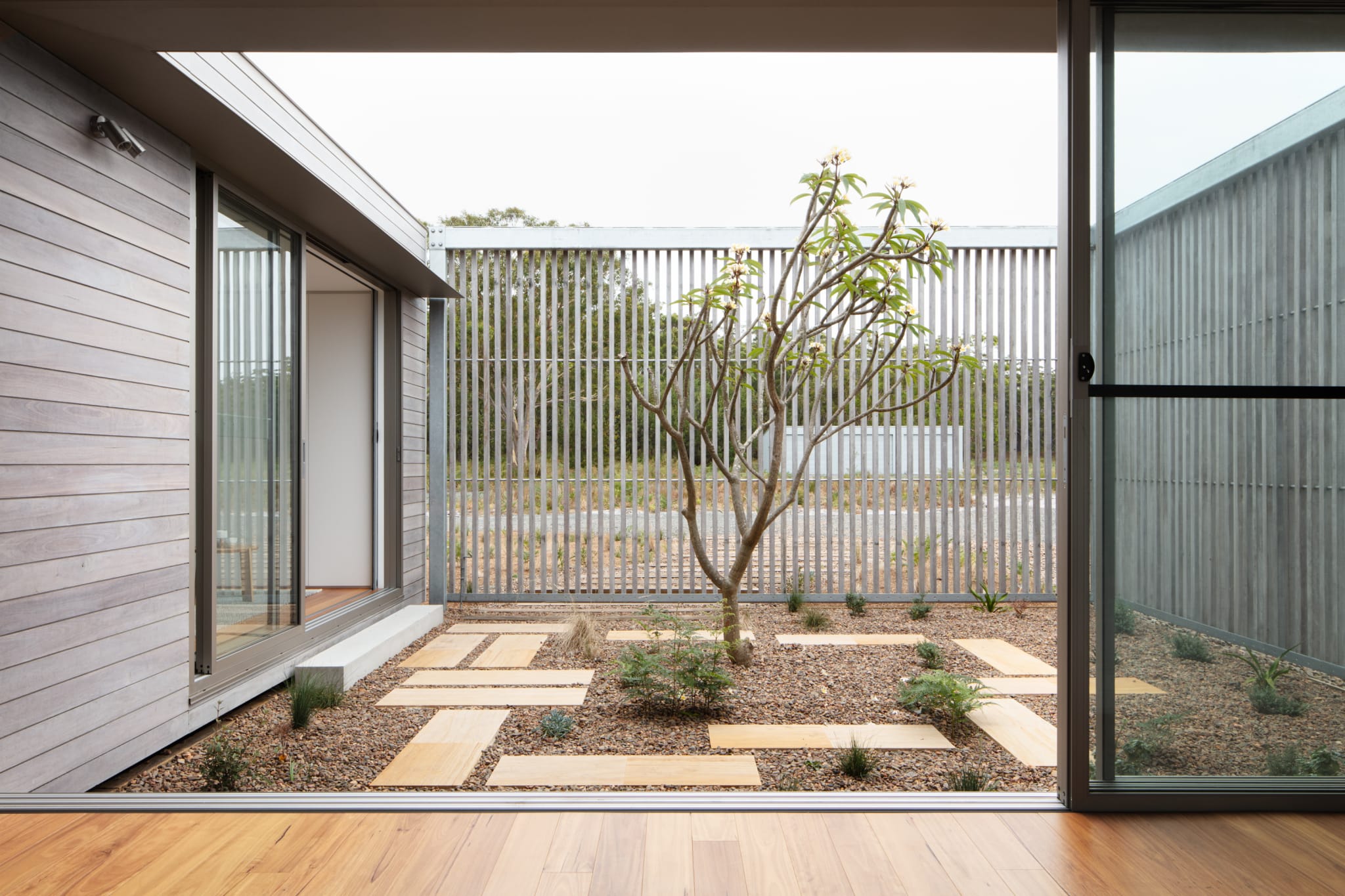
A private courtyard offers light and serenity.
“Approximate durations to build a new home can range anywhere from six to 18 months,” Callanan explains.
“We have the ability to produce new homes in anywhere from 10 to 16 weeks.”
This efficiency is achieved in a controlled environment, ensuring consistency in quality while also remaining immune to the pitfalls of traditional building methods.
The living space and kitchen form one module, while the decking area constitutes another, blending functionality with style.
Australian hardwood, known for its durability, is used extensively, giving the house a warm and inviting feel.
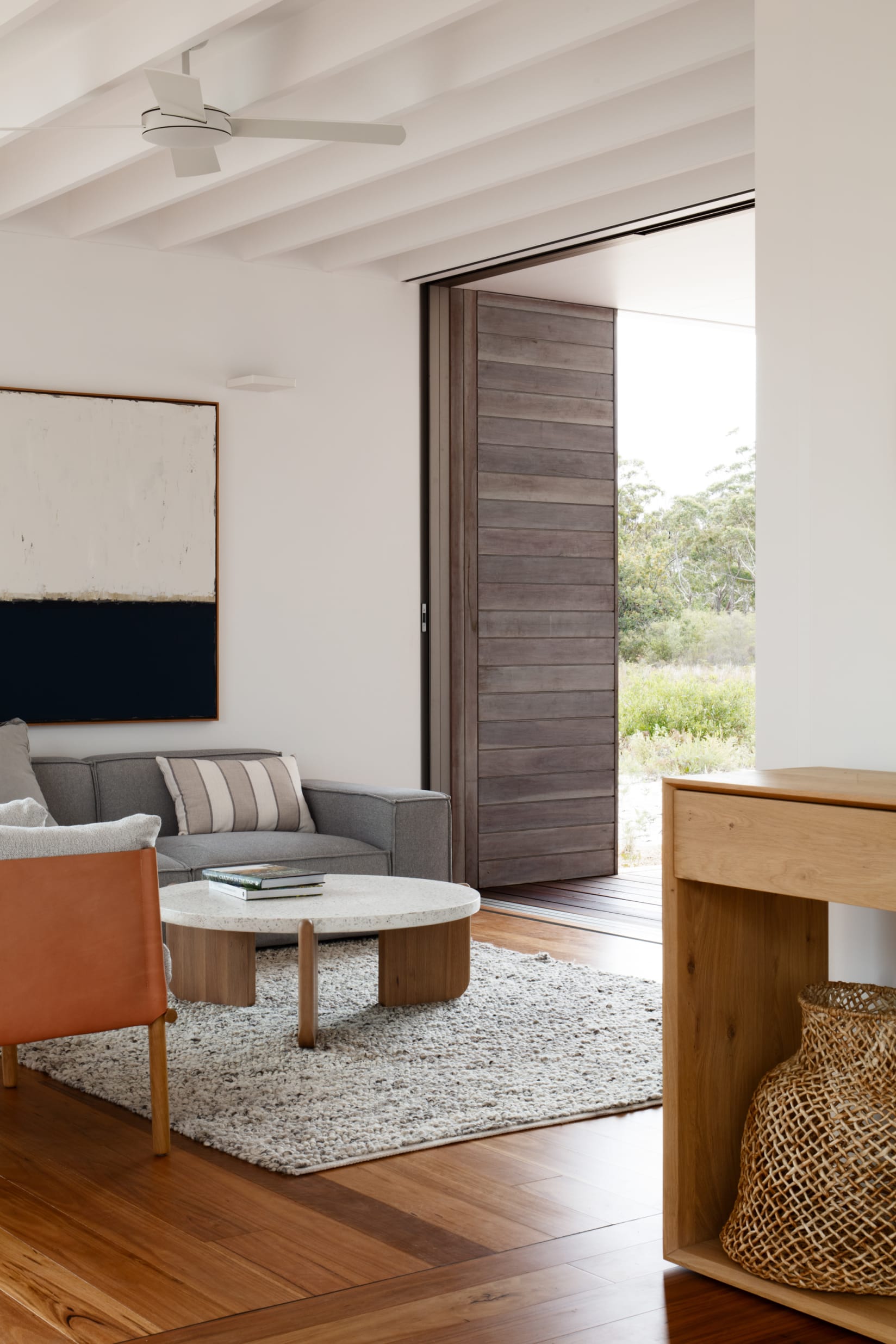
Bi-fold doors bring the outside, in, making you feel at one with the surrounds.
The interiors arrive almost complete, with final touches like flooring and ceiling installations, along with electrical and plumbing fittings, finalised on-site.
But this dramatically reduced construction time doesn’t mean cutting corners in terms of quality of sustainability, both of which are cornerstones of the Courtyard House’s design.
Sustainability is intricately woven into the design.
The house operates entirely off-grid, equipped with solar panels, a battery unit, and a 30,000-litre water storage and purification system.
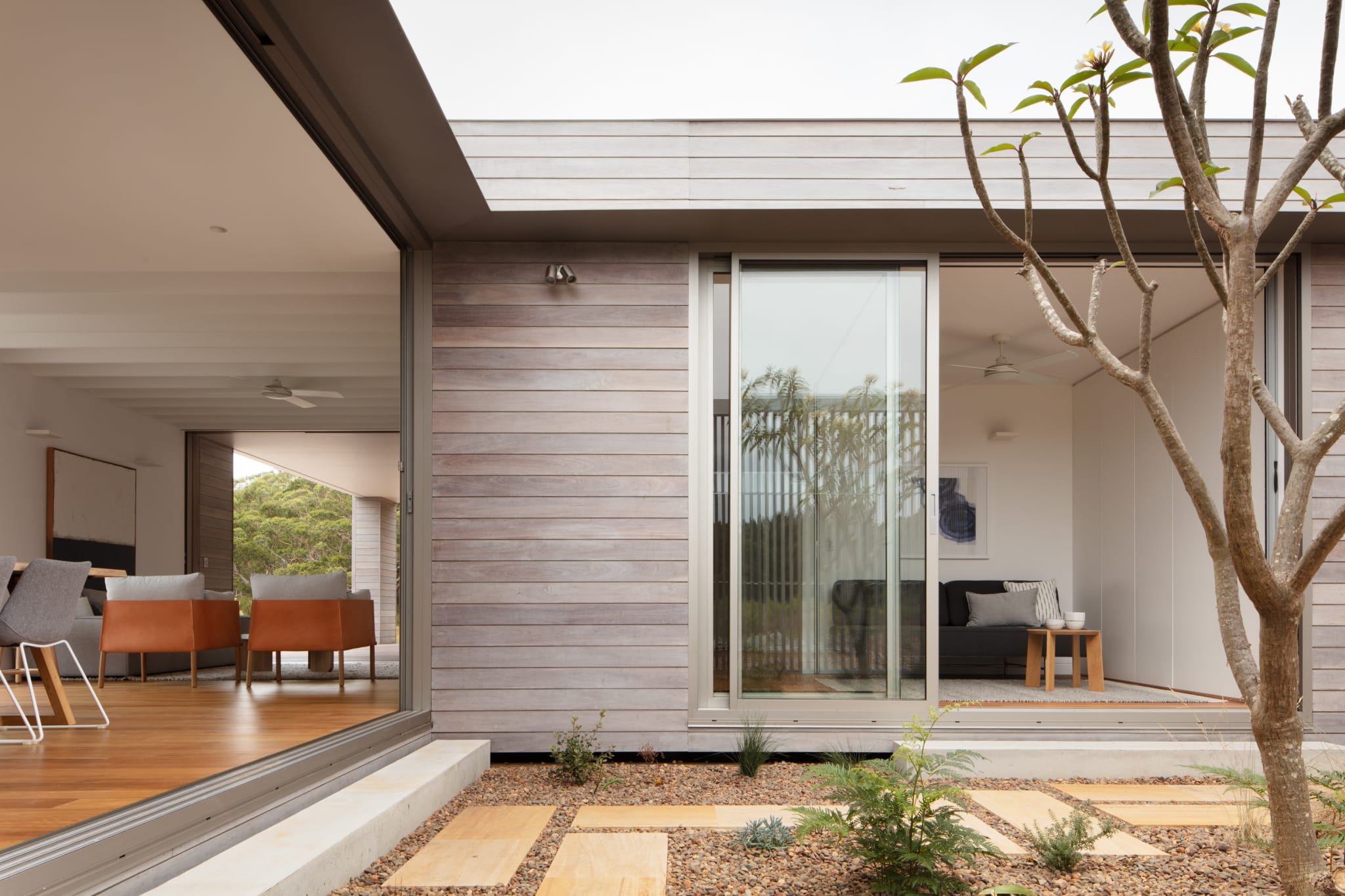
Nature has been considered in every aspect of the design process, utilising natural materials and simple design.
This self-sufficiency not only makes the home more affordable to run, but also makes it less susceptible to environmental shifts in the future.
Clever design and simple styling of the Courtyard House also emphasise an intimate connection with nature.
Full-height doors and glazed laminated panels allow natural light to flood the spaces, creating an airy and open atmosphere, while hardwood casement panels, merging with the exterior cladding, add a touch of elegance while facilitating natural ventilation.
The main bedroom, featuring floor-to-ceiling glass, blurs the boundaries between indoors and outdoors, offering an immersive natural experience.

Glass has been used cleverly to bring as much light into the main bedroom as possible.
“Floor to ceiling glass really makes you feel like the outside’s coming in,” Callanan says, highlighting the house’s design philosophy.
With reduced construction times and less susceptibility to fluctuations in build costs, Callanan believes “prefab or modular housing is the way of the future”.
Through FabPrefab’s state of the art facility, they’re able to produce homes that are well built, sustainable and long lasting and can do so “in a controlled environment at a pre-agreed costs without the risk of price escalation.”
“We’ve got capacity to build up to 50 houses a year, which would go a long way to providing new housing options and getting new houses on the ground at a time where there’s issues with housing affordability and housing shortages.”

Clever construction techniques have been used to keep the running costs of the home down.
The Courtyard House is more than just a home; it’s a harmonious blend of advanced construction techniques and exquisite interior design, offering a promising solution to the housing crises of today and tomorrow.
With its efficient construction process, sustainable design, and seamless integration of indoor and outdoor spaces, the Courtyard House by CHROFI Architects and FABPREFAB is proof that modern construction can meet the demands of style, functionality, and environmental consciousness.
Images: Clinton Weaver
Presented by Origin

